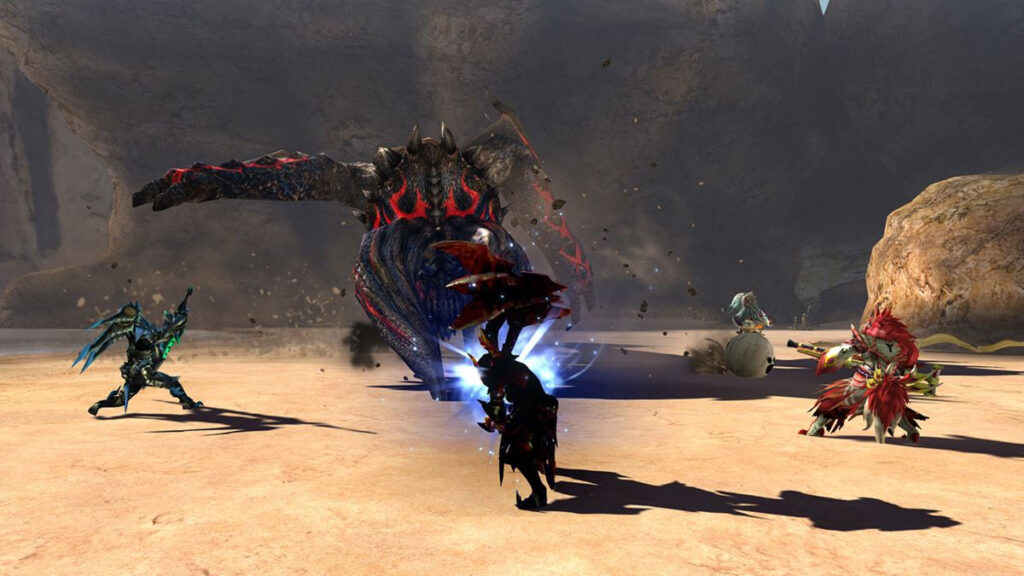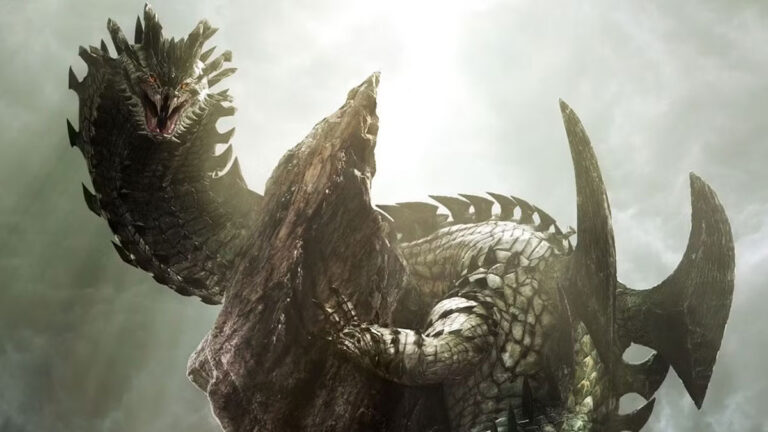Every time a new Monster Hunter title drops, so does the chorus of familiar complaints on social media. “The game’s too easy now,” or “Capcom is dumbing everything down.” Now, with Monster Hunter Wilds live-service style update dropping a more challenging fight, comes “Arch-Tempered Rey Dau is still a joke.” It doesn’t help that for some reason, the series is constantly compared to Dark Souls or other so-called ‘hardcore’ games. While the series has undoubtedly shifted toward more accessibility, the notion that Monster Hunter is hard is overstated in the first place. Much of its difficulty was artificial and rooted in assumptions that don’t hold up when you actually look at how the games play.
Let’s be real: much of Monster Hunter‘s old-school perceived difficulty was, for a lack of better term, self-inflicted. It never forced a permadeath system or discarding your items and XP on death. The game always give you three carts (or more) and it’s up to you if you want to redo by abandoning quests.
In terms of quest difficulty, before World, Monster Hunter used a fixed scaling system. It treated every Guild Hub hunt as if four players were present, even when playing solo. So unless you had a full hunting party, you were always punching above your weight. Just fighting a Rathian can quickly turn into a battle of attrition, especially to new players. But again, this wasn’t balanced challenge — it was unintended imbalance passed off as a rite of passage.
“A true monster hunter have to beat all G Rank quests solo!” Sometimes, the more hardcore ones even insist that it doesn’t count if a Palico tags along. But utilizing the intended mechanic with a full-team or even playing with just one other person? Felling a Dalamadur is no longer a hair-pulling experience.

If you wondered, “How did it came to this?” it’s not much of a big surprise. After all, Monster Hunter has always been designed as a multiplayer experience. The original PS2 game was made as Capcom experimented on PS2’s online capabilities and was heavily inspired by Phantasy Star Online’s co-op structure.
Mission-based, 50-minutes timer, 4-player max cooperative system, and a ‘dungeon-like’ system proved to be the perfect format. Especially when the company has no resource to compete with console MMOs the likes of Final Fantasy 11.
Then, as the series gain a huge following in its home market, Japan, it also thrives in the handheld gaming market. PSP entries like Freedom Unite and Portable 3rd were practically a cultural phenomenon. People young and old met up after school and in social gatherings just to hunt together. Various anime and manga — popular and niche — made not-so-subtle reference to the game.
Playing on the go and wireless connectivity reinforce the idea that it was never about ‘beating everything solo.’ Rather, it’s about ‘teaming up once you hit a roadblock.’ Playing alone was possible, sure, and you could argue that it’s hard to find fellow Hunters outside of Japan back then. But at the end of the day you choose to tackle the ‘imbalanced’ quests yourself. Not proof Monster Hunter was always hard and for the ‘hardcore’ crowd.
Video source: gdgd Fairies, Souta Sugahara, Bouncy
Classic Monster Hunter difficulty is arguably also the result of outdated design decisions. Of course, you can’t talk about questionable design and not mention the older games’ hitbox and stiff controls. Attacks often miss because you can only ‘aim’ your slashes at 8 axis and monsters have hitboxes much bigger than their models. The often meme’d Plesioth and its galaxy-wide hipcheck by both Western and Japanese fanbase is proof of it. The attack is even used as a joke special move in Monster Hunter Stories. The dreaded Fatalis was also mostly feared for its one-hit KO tail slam and not for its terrifying firebreath back in the day.
Other than that, the handheld-era games, especially Freedom Unite, were notorious for forcing players to ‘claw’ their way through hunts — literally. No thanks to the lack of secondary analog stick, the stiff control birthed the now-legendary grip style just to control the camera.
MH3U and 4U on the 3DS weren’t much better, with the dualscreen handheld ergonomics that made basic combat a challenge regardless of your skill level. Anyone on Nintendo who thought copying the PSP’s analog or adding super tiny nub was a good idea should be put in the loony bin. That wasn’t intentional difficulty, it was just a poor hardware pairing. Simple as that.
There’s also the fact that Monster Hunter is a series that heavily rewards knowledge. Somewhat comparable to fighting games, understanding monster tells, weapon matchups, and positioning are skills that carry over from game to game. If you’ve fought Rathalos ten times before, you’re not going to struggle against it or even other Flying Wyverns. It’s not because it got easier: you just ‘got gud’ thanks to those accumulated experiences.
That’s why for most fans, their first Monster Hunter game is always the hardest. It’s not nostalgia but ignorance of systems they would later master.

Of course, that does not mean Monster Hunter Wilds isn’t doing some major streamlining, and arguably, some of it to the game’s detriment. Seikret autorunning, healing Endemic Life peppered all over the map, Focus Mode 360 aiming, and more. Those are valid concerns and deserve its own discussion. But the broader point remains: when people say Monster Hunter is too easy or not hard enough, they often mean it’s not awkward anymore.
So no, Monster Hunter isn’t Dark Souls or Nioh or Blasphemous what-have-you, and it never was. The series have always been balanced at middle-to-high schoolers level. If you really want something to tear your soul apart, Capcom already have Ghosts ‘n Goblins and Maximo. Now try no-hit running those games.
